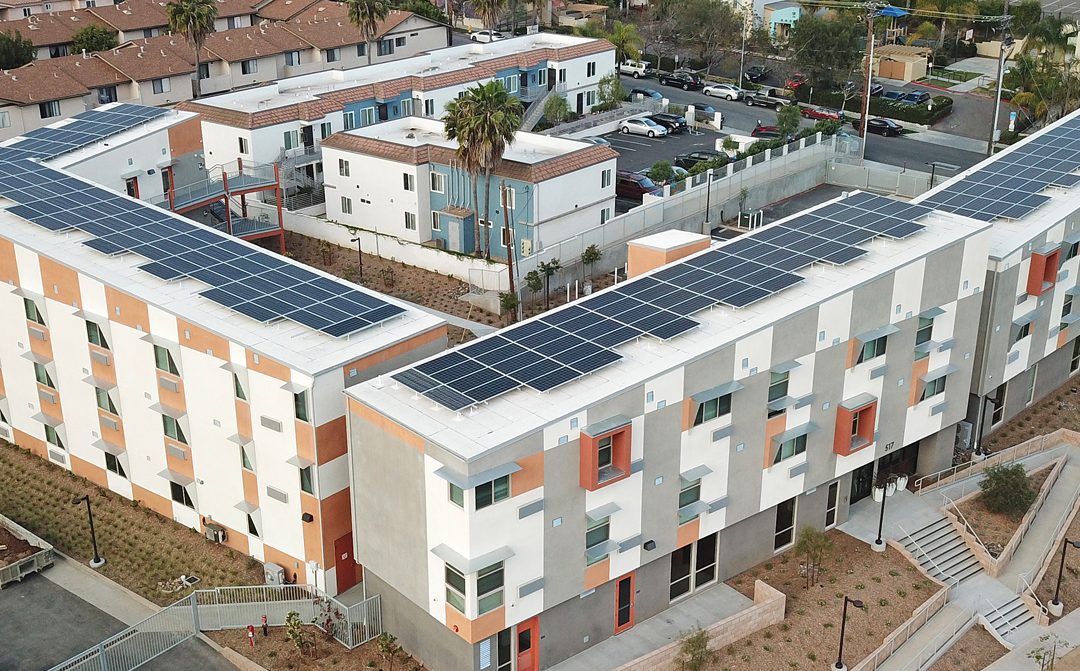National CORE’s Carbon Footprint Check-In
National CORE has committed to building cost-contained high-performance communities that integrate energy efficiency and sustainability into each development and every apartment home. As the first affordable housing developer to sign the American Institute of Architects’ (AIA) 2030 Commitment, National CORE has pledged to design and develop to combat the effects of climate change. In honor of Earth Day, we are sharing our efforts to achieve this goal.
In the last five years, National CORE has reduced its carbon footprint by 10 percent, a decrease of 1.2 million pounds of carbon dioxide. This is the equivalent of permanently removing 147 cars from our roads or adding another 38,709 trees to our planet.
Even as National CORE continues to grow its portfolio, because of our approach to sustainable design, we have been able to lower our total impact on the environment by maximizing energy efficiency and implementing water conservation efforts. At the same time, these building practices are cost-effective for the long-term operation of the community, while allowing National CORE to offset the utility cost to our residents.
Recently, National CORE completed construction on its first Zero-Net Energy (ZNE) communities, Day Creek Senior Villas (140 apartment homes) in Rancho Cucamonga and Vista Verde (101 apartment homes) in Ontario. Day Creek Senior Villas generates 100% of the electricity needs of the community through onsite solar panels while Vista Verde, an all-electric community, provides 100% of its energy through onsite renewable energy systems. As part of its long-term plan, National CORE is in the process of installing solar panels at many of our communities, estimated to reduce our carbon footprint by an additional 40%.
While the State of California steers all residential construction, through the California Energy Code, towards a ZNE target, National CORE has consistently gone above and beyond what is prescriptively required, bringing focus to measures that reduce energy and water use. In identifying these measures in the design process, National CORE is able to focus on elements that will have the greatest impact to reduce building energy use.
Water conservation also is a high priority for the organization. Between 2015 and 2019, during the height of the water crisis in California, National CORE’s water use (measured in gallons per bedroom) declined by 8.82%. This reduction can be attributed to the replacement of plumbing fixtures, turf removal, irrigation redesign, and the installation of drought-tolerant landscape. Most recently, National CORE installed toilet leak sensors in some of our existing properties, allowing us to identify water leaks in real-time, sometimes saving thousands of gallons of water in a single leak.
In the coming years, National CORE will continue to identify strategies and implement approaches for integrating energy efficiencies and high-performance goals, standardizing these practices throughout our portfolio so we can continue to save energy, conserve water, and in the process, save money for the organization and our residents.

